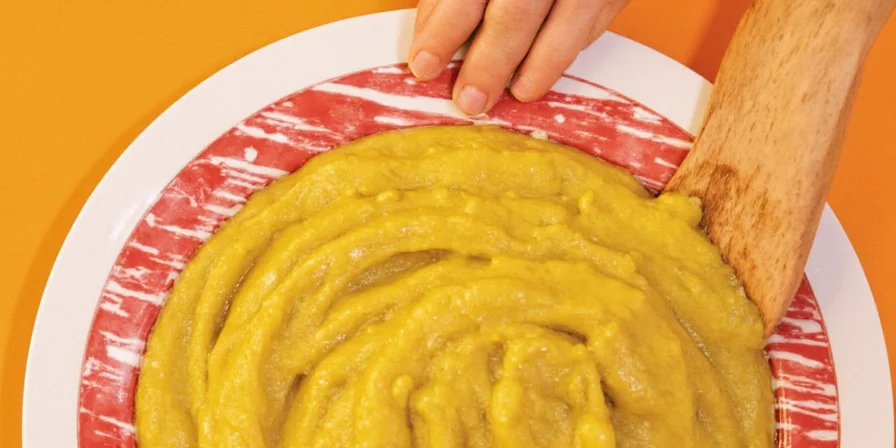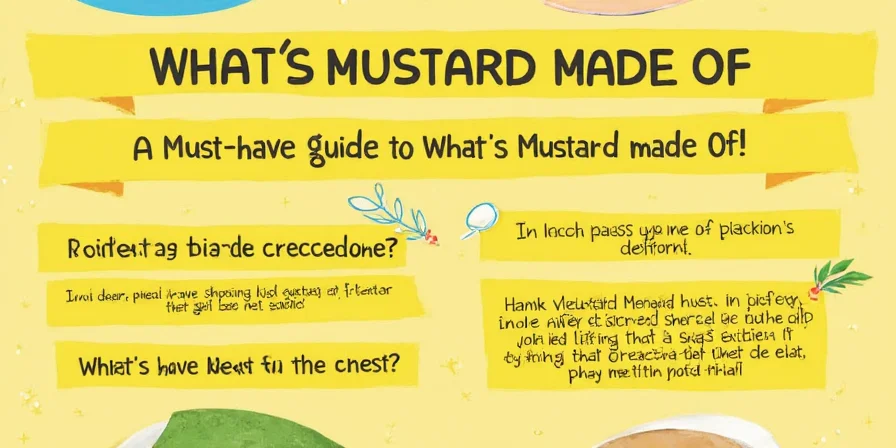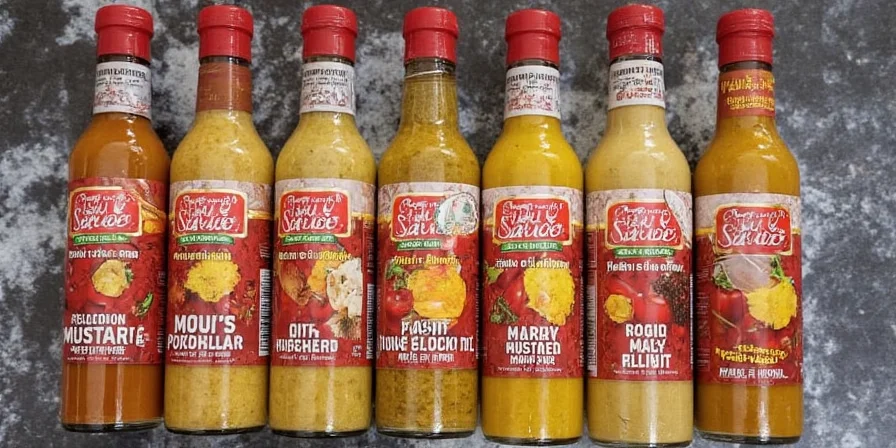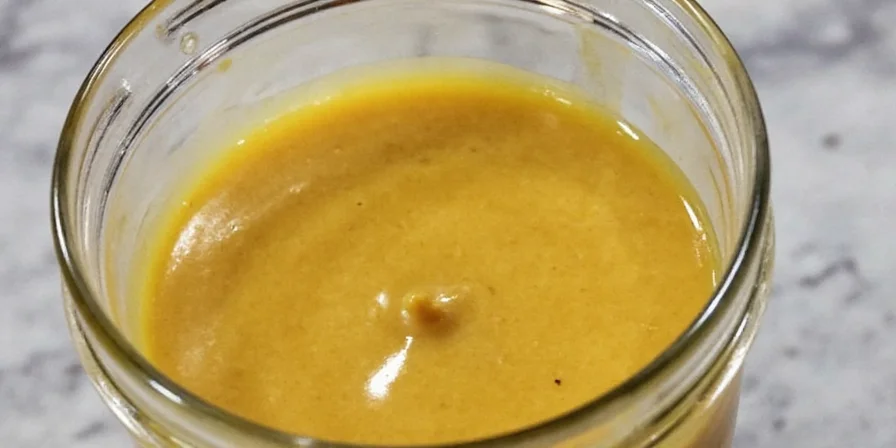Mustard is primarily made of ground mustard seeds, liquid (typically vinegar, water, or wine), and salt. The specific type of mustard seeds (yellow, brown, or black), the liquid used, and additional ingredients like spices, sweeteners, or flavorings determine the final product's heat level, texture, and taste profile.
Welcome, culinary explorers! Whether you're a curious beginner wanting to understand basic mustard ingredients or a food professional seeking advanced applications, this guide covers what mustard is made of at every level of detail. We'll start with the fundamental answer and progress to the sophisticated science that transforms these simple ingredients into one of history's most versatile flavor enhancers.
Quick Facts: What's Mustard Made Of?
- Core ingredients: Mustard seeds, liquid (vinegar/water/wine), salt
- Seed varieties: Yellow (mild), brown (medium heat), black (intense heat)
- Liquid purpose: Activates enzymes that create mustard's signature heat
- Additional components: Spices, sweeteners, preservatives vary by type
- Simplest formulation: Just seeds + liquid + salt
Table of Contents
- The Essential Ingredients: What Mustard Is Made Of
- Mustard Seed Varieties and Their Impact
- How Liquid Transforms Seeds into Mustard
- Common Mustard Types and Their Ingredients
- The Science Behind Mustard's Heat (What Makes It Pungent)
- How Mustard Changes After Production
- Practical Applications in Cooking
- How to Make Mustard at Home (Basic to Advanced)
- Frequently Asked Questions
The Essential Ingredients: What Mustard Is Made Of
All mustards share three fundamental components: mustard seeds, liquid, and salt. These simple ingredients undergo a biochemical reaction that creates mustard's distinctive flavor and heat.
Mustard seeds: The foundation of all mustard products. Different varieties produce different heat levels:
- Yellow seeds (Sinapis alba): Mild flavor, commonly used in American yellow mustard
- Brown seeds (Brassica juncea): Medium heat, used in Dijon and many European mustards
- Black seeds (Brassica nigra): Intense heat, used in spicy mustards and Indian cuisine
Liquid: Activates the enzymatic reaction that creates mustard's pungency. The type of liquid affects both flavor and heat development:
- Vinegar: Creates immediate but shorter-lasting heat, preserves mustard longer
- Water: Produces maximum initial heat but shorter shelf life
- Wine: Adds complexity while moderating heat development
Salt: Enhances flavor, acts as preservative, and influences the enzymatic reaction rate.

Mustard Seed Varieties and Their Impact
The specific mustard seed variety determines the base heat level and flavor profile:
- Yellow Mustard Seeds: Largest and mildest variety, creating the familiar bright yellow condiment. Contains fewer pungent compounds, making it ideal for classic hot dog mustard.
- Brown Mustard Seeds: Medium-sized seeds with moderate heat, used in Dijon and many European mustards. Provides balanced pungency that develops gradually.
- Black Mustard Seeds: Smallest and most pungent variety, popular in Indian and Asian cuisines. Creates intense heat that develops quickly but also dissipates faster.
Most commercial mustards blend multiple seed varieties to achieve specific flavor profiles. Artisanal producers often experiment with heirloom varieties for unique characteristics.
How Liquid Transforms Seeds into Mustard
The liquid component isn't just for texture—it triggers the biochemical reaction that creates mustard's signature heat. When mustard seeds are crushed and mixed with liquid, an enzyme called myrosinase activates and converts compounds called glucosinolates into pungent isothiocyanates.
The type of liquid significantly impacts this reaction:
- Vinegar (acidic): Slows the reaction, creating immediate but shorter-lasting heat. This is why yellow mustard has consistent mild heat.
- Water (neutral pH): Allows maximum reaction, producing intense initial heat that fades more quickly.
- Wine (moderately acidic): Creates balanced heat development, as seen in Dijon mustard.

Common Mustard Types and Their Ingredients
Different mustard varieties use specific ingredient combinations to achieve distinctive profiles:
| Type | Core Ingredients | Distinctive Components | Heat Level |
|---|---|---|---|
| American Yellow | Yellow seeds, vinegar, water, salt | Turmeric (for color), paprika | Mild (immediate) |
| Dijon | Brown seeds, white wine, vinegar | No turmeric, verjuice sometimes used | Medium (develops over time) |
| Whole Grain | Mixed seeds, wine/vinegar | Visible seed texture, herbs | Variable (textural heat) |
| Spicy Brown | Brown seeds, vinegar | Higher brown/black seed ratio | Hot (sharp) |

The Science Behind Mustard's Heat (What Makes It Pungent)
Unlike chili heat measured in Scoville units, mustard's pungency comes from volatile compounds called allyl isothiocyanates that activate different sensory receptors. This creates that distinctive upward-clearing sensation rather than the burning mouthfeel of capsaicin.
Mustard's heat develops through three phases:
- Activation Phase (0-24 hours): Maximum heat develops as enzymes convert compounds
- Transformation Phase (24-72 hours): Acidic components gradually neutralize enzymes
- Stabilization Phase (3+ days): Flavor mellowing occurs as volatile compounds dissipate

How Mustard Changes After Production
Mustard's flavor continues evolving after production through three distinct phases:
- Phase 1 (0-30 days): Sharp, immediate heat from volatile compounds
- Phase 2 (30-90 days): Development of complex sulfur compounds creating nutty, earthy notes
- Phase 3 (90+ days): Conversion to stable compounds producing mellow, almost sweet profile
This explains why artisanal producers time their releases—each phase serves different culinary purposes. Home formulators can control this by adjusting storage temperature.
Practical Applications in Cooking
Understanding what mustard is made of reveals its versatile culinary functions:
- Emulsion Stabilization: Add 1 tsp Dijon to vinaigrettes before oil incorporation for stable emulsions
- Meat Tenderizing: The natural enzymes in fresh mustard break down muscle fibers effectively
- Flavor Layering: Incorporate mustard at multiple cooking stages for dimensional flavor
- Browning Catalyst: Mustard promotes superior crust development on proteins
- Bitterness Reduction: Mustard's compounds interact with bitterness receptors, masking bitter flavors

How to Make Mustard at Home (Basic to Advanced)
Creating your own mustard allows complete control over ingredients and heat level:
Basic Homemade Mustard Recipe
- 1/2 cup mustard seeds (yellow for mild, brown for medium, black for hot)
- 1/2 cup liquid (vinegar for immediate mild heat, water for hotter initial reaction)
- 1 tsp salt
- Optional: 1-2 tsp sweetener, spices to taste
- Combine seeds and liquid, let soak 12-24 hours
- Add salt and any additional ingredients
- Grind to desired consistency (food processor works well)
- Store in refrigerator for 3-7 days to allow flavors to develop
Note: Heat will continue developing for several days after preparation before gradually mellowing.

Frequently Asked Questions
Q: What are the basic ingredients in mustard?
A: All mustards contain three essential components: mustard seeds, liquid (typically vinegar, water, or wine), and salt. The specific type of seeds and liquid used determines the final product's heat level and flavor profile.
Q: Why does mustard get hotter over time after making it?
A: When mustard seeds contact liquid, an enzyme called myrosinase activates and converts compounds into pungent isothiocyanates. This reaction peaks at 24-48 hours before enzymes deactivate, creating the delayed heat profile. Acidic liquids like vinegar slow but don't stop this reaction.
Q: Can I make mustard without vinegar?
A: Yes, water or wine can replace vinegar. Water creates maximum initial heat but shorter shelf life, while wine creates complex flavors with moderate heat development. Vinegar is primarily used for preservation and to control the heat development timeline.
Q: What makes Dijon mustard different from yellow mustard?
A: Dijon uses brown seeds and wine instead of yellow seeds and vinegar. It contains no turmeric (which gives yellow mustard its color), has a higher pH level, and develops heat over 24-48 hours rather than providing immediate mild heat.
Q: Why does some mustard separate while others stay smooth?
A: Separation relates to mucilage content and emulsification. Mustard seeds contain natural mucilage that acts as emulsifier. Proper seed-to-liquid ratio (typically 1:1) and fine grinding create stable emulsions. Salt strengthens protein bonds that help maintain consistency.











 浙公网安备
33010002000092号
浙公网安备
33010002000092号 浙B2-20120091-4
浙B2-20120091-4